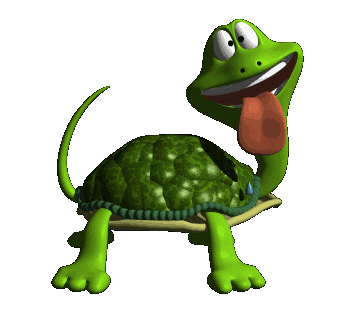Tammy’s Tiny Turtle
Emergent Literacy Design
Ariel Lavish
Rationale: This lesson will help children identify /t/, the phoneme represented by T. Students will learn to recognize /t/ in spoken words by learning a meaningful representation (the ticking of a clock) and the letter symbol T, practice finding /t/ in words, and apply phoneme awareness with /t/ in phonetic cue reading by distinguishing rhyming words from beginning letters.
Materials: Primary paper and pencil; chart with "Tammy’s tiny turtle takes a taxi to town"; drawing paper and crayons; Dr. Seuss's ABC (Random House, 1963); word cards with TOP, TEN, TAME, TEST, TAKE and TUMMY; assessment worksheet identifying pictures with /t/ (URL below).
Procedures
1.Say: Our written language is a secret code. The hard part is learning what letters stand for, the mouth moves as we say words. Today we're going to work on spotting the mouth move /t/. We spell /t/ with letter . /t/ sounds like a ticking clock.
2.Let's pretend to be a clock, /t/, /t/, /t/. Notice where your tongue is? (Touching the back of your upper teeth). The sound /t/ is a quick, popping sound.
-
Let me show you how to find /t/ in the word nest. I'm going to stretch nest out in super slow motion and listen for my ticking clock. Nnn-e-e-est. Slower: Nnn-e-e-e-ss-t There it was! I felt my tongue touch the back of my teeth. I can feel the clock ticking /t/ in nest.
4.Let's try a tongue twister [on chart]. " Tammy’s tiny turtle takes a taxi to town." Everybody say it three times together. Now say it again, and this time, really punch the /t/ at the beginning of the words. " a ." Try it again, and this time break it off the word: "/t/ /t/ /t/ /t/ a /T/ /T/o /T/own.
5.[Have students take out primary paper and pencil]. We use letter to spell /t/. Capital T looks like a /t/ able. Let's write the lowercase letter . Start just below the rooftop. Start to make a tall straight pole in the air, then straighten it out all the way down to the sidewalk. Then cross it at the fence. I want to see everybody's . After I put a smile on it, I want you to make nine more just like it.
-
Call on students to answer and tell how they knew: Do you hear /t/ in teeth or nails? elbow or toe? Big or little? Tall or small? tan or pail? Say: Let's see if you can spot the mouth move /t/ in some words. Give me a thumbs up if you hear /t/: “Tammy got mad when the turtles took the taxi.”.
7.Say: "Let's look at an alphabet book. Dr. Seuss tells us about ten tired turtles on a trees! Read page 46, drawing out /t/. Ask children if they can think of other words with /t/. Ask them to make up a silly story with /t/. Then have each student write their silly story with invented spelling and draw a picture of their story. Display their work.
8.Show TOP and model how to decide if it is or : The sounds like the ticking clock /t/, so this word is -, . You try some: TEN: ten or men? TAME: same or tame? TEST: test or best, TAKE: take or make? TUMMY: tummy or yummy?
9.For assessment, distribute the worksheet. Students are to complete the partial spellings and color the pictures that begin with . Call students individually to read the phonetic cue words from step #8.
Sources:
Assessment worksheet: http://www.kidzone.ws/kindergarten/t-begins2.htm
Geisel, T. (Dr. Seuss). Dr. Seuss's ABC. Random House, 1963.
index.http://www.auburn.edu/academic/education/reading_genie/rendezvous.htm
“Be a Ticking Clock with T” by Savanna Smith


